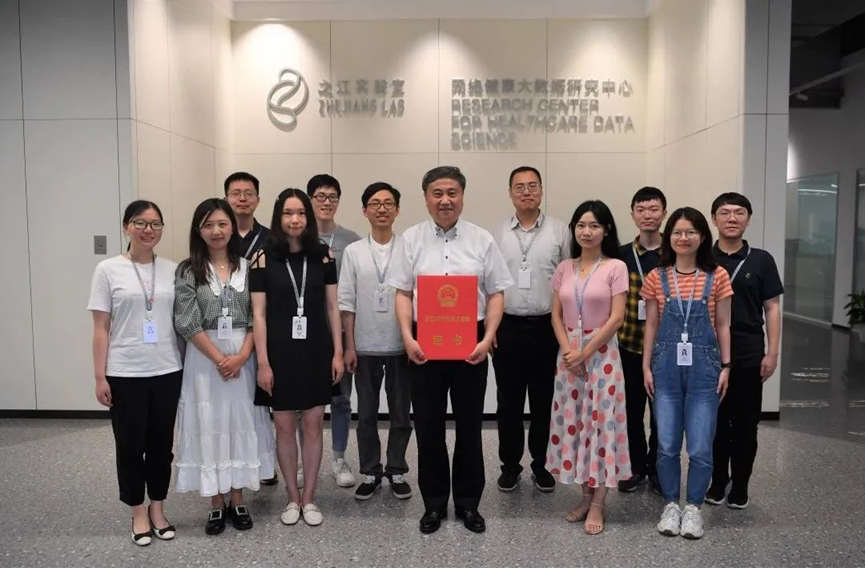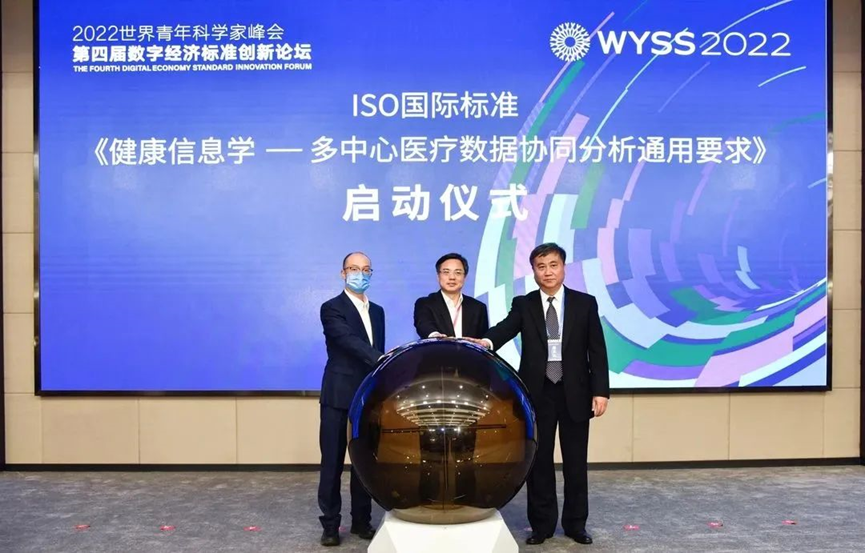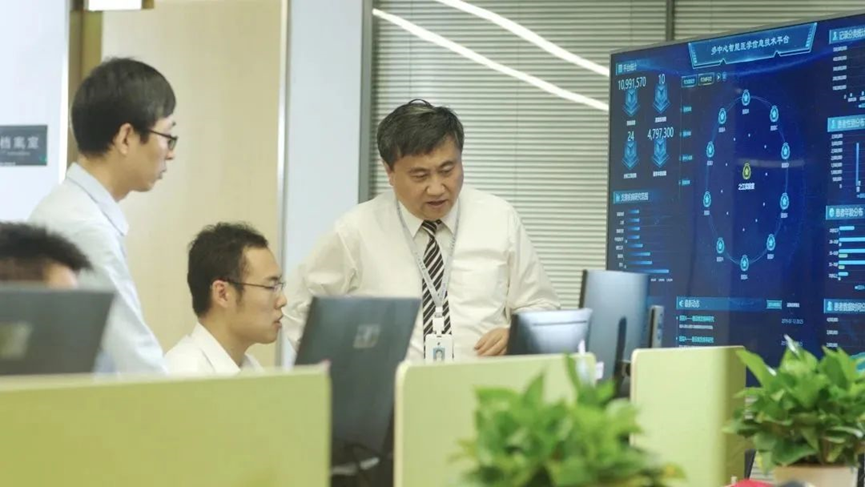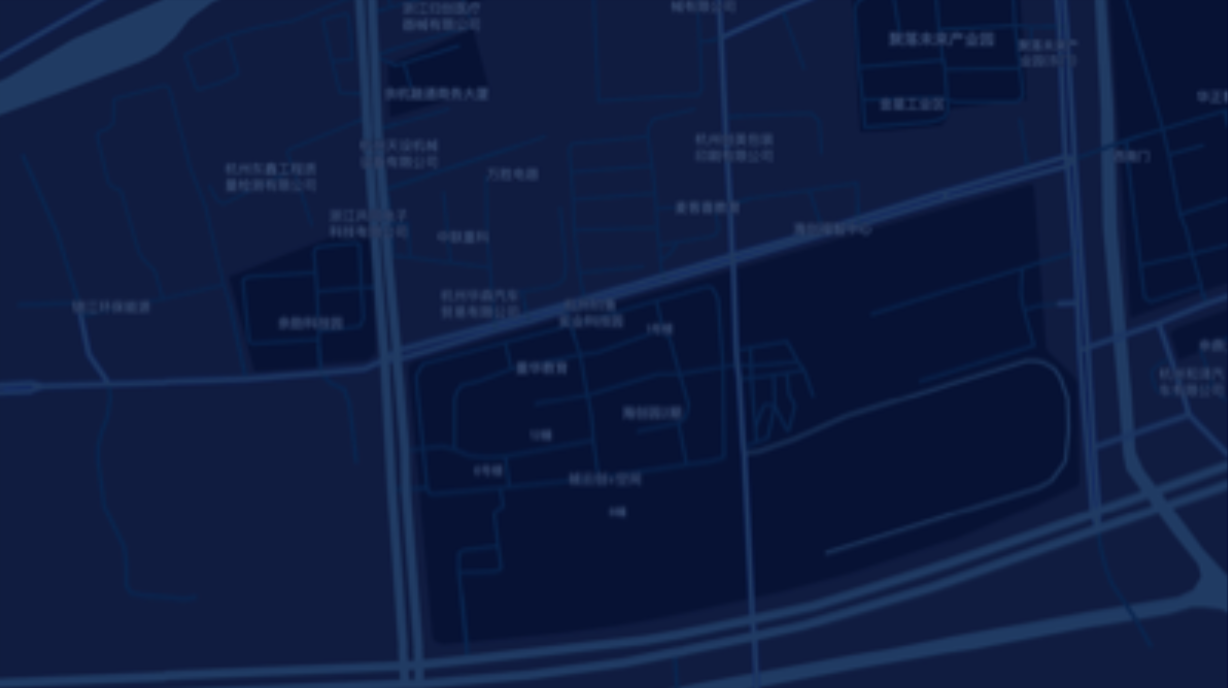

Graduated from university in 1984,
LI Jinsong went to study in Japan in 1988,
returned to China in 2005,
and joined Zhejiang Lab in 2018.
Traveled to and fro between China and foreign countries,
LI Jinsong has been working on medical informatics for nearly 40 years.
From catch-up to overtaking,
LI Jinsong has interpreted his love for scientific research
with 40 years of persistence.
His First "Science and Technology Progress Award" at Age 26
In the early 1980s, the first wave of informatization started in China, and then the computer information management system began to partially replace human labor, and standalone applications with financial management and other functions were implemented in some large hospitals.
In 1984, LI Jinsong graduated from university, just as Anhui Provincial Hospital wanted some improvement in medical care and informatization. LI Jinsong, who graduated from Zhejiang University with a major in in biomedical instruments, was a rare talent at that time. Almost from the start, he was entrusted with important tasks and engaged to prepare the CT Room and build the medical information system.
"At that time, my salary was 51 yuan, but the hospital gave us a grant of 100,000 yuan to buy computers." The Secretary of the Party Committee of Anhui Provincial Hospital is forward-looking, and such abundant funds show the support and expectations of hospital leaders for informatization.
LI Jinsong and several colleagues went to Shanghai and spent this huge sum buying six microcomputers.
"At that time, information system was basically a standalone application, and a computer could do only one thing." LI Jinsong recalled, "We used these six computers to build a LAN system, which not only enables financial management, medical equipment management, office management, drug management, bed management, etc., but also can read and transfer data between computers."
This system solved many of the problems that Anhui Provincial Hospital faced at that time. For example, it allows us to keep track of the status of drugs and the number of patients admitted to the hospital every day. Thanks to this system, LI Jinsong and his colleagues won Anhui Provincial Science and Technology Progress Award in 1988.
Although it helped the hospital run more efficiently, the underlying hardware was still overshadowed by its peers on an international scale. "We used microcomputers, while some foreign hospitals had started using mainframe computers that feature the larger memory and faster processing speed."
Therefore, LI Jinsong, who had just achieved a modicum of success, decided to go abroad and gain knowledge and experience.
During 18 years of study and work in Japan, LI Jinsong has completely experienced the major upgrade of computer equipment, the large-scale promotion of electronic medical records (EMRs), the development and application of telemedicine, and other technologies. Since his return to China in 2005, he has focused on the research and development of EMR systems and telemedicine-related technologies, and carried out major projects such as "International Clinical Data Exchange" and "Electronic Clinical Pathway Based on Semantic Technologies".
Joining ZJ Lab and Performing an "Overtake on the Bend" in Certain Fields
When LI Jinsong returned to China, the domestic EMR sector was underdeveloped. It was not until 2010 that detailed policies and regulations on EMRs and clinical pathways were intensively introduced.
According to the public information released by the National Health Commission, the national average level of application of EMRs in tertiary public hospitals of Western medicine exceeded Level 3 for the first time in 2019, and 78.13% of the provinces reached Level 3 or above.
In fact, Level 3 ranks lower as shown in the evaluation criteria. According to the National Health Commission's evaluation criteria, the use of EMR systems is divided into nine levels; Level 3 represents interdepartmental data exchange, and Level 4 represents hospital-wide information sharing and primary medical decision support. A higher level represents higher requirements for medical data sharing, medical decision support and health information integration.
However, it is not easy to share and utilize medical data.
"Because of China's large population base, data collection is chaotic, incomplete and unstandardized, resulting in a lot of data becoming unusable. Regarding medical records as personal privacy, hospitals are worried about data breaches, so they dare not use these data. Doctors are not computer experts, nor they have the ability to extract disease information from data or use data to give medical advice." LI Jinsong pointed out that "cannot use, dare not use and not know how to use" are the "three big mountains" blocking the deep utilization of medical data.
Data are sleeping, and challenges also mean great opportunities. LI Jinsong firmly believes that there is much to be done in this field. An institutionally more liberalized platform is needed to support him to cross these "three big mountains".
In 2017, ZJ Lab offered an "olive branch" to LI Jinsong. Within half a year, the project of "research, development, application and promotion of generic technologies for the deep utilization of multi-center clinical data" was successfully established at ZJ Lab, and the team was also quickly built.
In June 2021, this project was awarded the first prize for Zhejiang Provincial Science and Technology Progress Award. After three years of research, LI Jinsong led his team to build a multi-center intelligent medical information platform, independently develop the most efficient homomorphic encryption technology in the field, and realize the sharing of data analysis results on the premise that the original data is kept in hospitals; develop an ultra-large-scale EMR knowledge graph system, which has covered 21 categories of standardized medical term sets, including 5.37 million examples of medical concepts, 40.25 million concept correlations and 96 million articles. The problems of " cannot use, dare not use and not know how to use " medical data have been overcome.

"The deep utilization of clinical data is being studied all over the world. Every country has its own utilization methods and different problems. Now we have formed our own characteristics in this area, not as a chaser. It's probably fair to say that we have overtaken other countries through corners," LI Jinsong said.
"EMR creation progressed from zero to one in its first stage. Later, the system has been improved gradually, and big data has come to the fore. Finding the potential value in an ocean of data becomes a new issue that evolves from zero to one." LI Jinsong said, "In this way, driven by interest and curiosity, we solve one problem and one again after another, and end up making achievements that truly benefit the country and society."
At present, the multi-center intelligent medical information platform developed by his team has been accessed to a number of large Grade A tertiary hospitals in three capital cities of the Yangtze River Delta, including Hangzhou, Nanjing and Hefei. Knowledge graphs containing millions of terms can be deployed in just a few hours. Based on this platform, the ISO international standard project led by the team won the support of experts from China, the United States, Japan, South Korea, Iran, Kazakhstan, Nigeria and other countries, and was officially approved in September 2022, contributing Chinese wisdom to the collaborative utilization of global multi-center clinical data.

Leading the Team to the Next Zero to One Process
Given nearly 40 years of hard work on medical informatics, LI Jinsong always keeps enthusiastic to do scientific research and spends almost all his time on scientific research other than sleeping.
"Mr. LI is enthusiastic and energetic, and he often works until late at night. It has been so since I joined the team." Four years ago, HU Peijun, who received a Ph.D. degree in mathematics, joined ZJ Lab as the "No.1 member" of LI Jinsong's team.
Being influenced by LI Jinsong's attitude toward work, all the team members consciously rally around him and devote themselves to scientific research.
"Scientific research is often a continuous process, because a conception or calculation may last for a long time. When tackling a critical point, we often work with Mr. LI until the wee hours of the morning," said ZHOU Tianshu, a member of LI Jinsong's team and a research expert at ZJ Lab.
"Mr. LI stands high and grasps the way forward accurately. Outcomes, clinical significance and application scenarios are what he keeps emphasizing," HU Peijun said.

During the COVID-19 pandemic, LI Jinsong led his team to tackle key problems day and night, and completed the "COVID-19 Risk Assessment and Decision-Making System for General Practitioners" in one month, which has effectively improved the diagnosis and treatment efficiency of designated medical institutions. In order to serve the Hangzhou Asian Games, the team built the Asian Games Medical Emergency Support System, which connects five urban systems in Hangzhou, Ningbo, Wenzhou, Jinhua and Shaoxing, and can schedule medical resources efficiently via data center cockpit.
"Don't care about personal gains or losses, but pay more attention to outcomes; don't ask about success or failure, but focus only on growth." That's LI Jinsong's motto for his team. Based on the project-driven institutional guarantee model, the Research Center for Healthcare Data Science has built a big team involving multiple disciplines and technical fields such as biomedical engineering, computer and medicine under the leadership of LI Jinsong, and has repeatedly been awarded the Annual Excellent Research Center of ZJ Lab.
Medical data mining is still going on, and the multi-center intelligent medical information platform is constantly iterating in terms of technology, model and knowledge. LI Jinsong and his team are also looking for and identifying new research questions and moving on to the next zero-to-one process.
"I believe that in the future, hospitals will not only set up internal medicine and surgery departments, but also an 'artificial intelligence department' that directly uses AI technology to provide clinical services for patients. That's what I'm looking forward to and also what I'm working towards."











